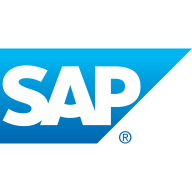


Find out what your peers are saying about SAP, Microsoft, Infor and others in ERP.
SAP ERP did provide value for money.
It's not a matter of the solution; it's a matter of the clients and the approach that we follow.
If we can maximize that, we can get the full price benefit of the solution.
We have observed a good return on investment, with calculations based on a five-year ROI plan.
The transcript suggests SAP S4HANA Cloud may offer cost and time savings.
SAP technical support is very good.
It was very quick, and we didn't have many tickets, but every time any issues arose, they were very quickly resolved.
It is not easy to justify something as high priority unless the system is completely down.
A traditional challenge with SAP support is that SAP teams only support the standard functions, which are part of the product.
Establishing the right channels was a challenge, as BTP was new to everyone, including our SAP contacts.
I would rate the support a ten because there are a lot of knowledge-based articles published, and most of them are available online.
My experience shows that it often requires another level or two to reach someone who can effectively address the problems.
If tickets are raised to the wrong team, it takes considerable time to be routed to the appropriate team.
SAP doesn't typically listen to individual feedback because of their position as the number one product.
It is scalable when moving from one version to another or adding additional components like warehouse management.
The scalability of SAP ERP is excellent.
SAP S/4HANA scales exceptionally well.
It is very easy to scale within businesses, especially when a new business falls within the range.
Scalability is a key strength of SAP, especially for HANA, compared to all the other ERPs.
Production processes would be on hold without stability, so it is quite important that the software is very stable.
Stability-wise, SAP ERP is the best product among others.
The SAP HANA system is not very easy to unlock, and it's something strange as, compared to other databases, when transaction logs are full, you stop the system, run the transaction log backups, and then restart.
Not very often, but it can happen, especially with user load; if many people use the system at the same time, there might be issues depending on various factors.
I rate the stability of SAP S_4HANA as fairly stable because we have never experienced any downtime from SAP, and the performance is good.
SAP S_4HANA Cloud is very stable, especially for bigger corporates that are geographically spread out.
It is very flexible and can cater to every industry.
SAP ERP could improve by integrating additional components such as digital signatures and barcoding.
SAP recently implemented Databricks, and they started investing significantly in the analytic environment.
We are using version 6.0 and it meets our needs.
Organizations face challenges like adapting to new technologies rapidly, and whether customers are early or late adopters influences their experience.
I can perform a lot of data manipulation directly on SAP using S-One, without having to resort to Excel, unlike with View ID.
The performance of the SAP interface could be improved.
The challenge is that if a customer has already deployed the entire solution on-premises, it becomes difficult to immediately convert to the new product and manage new license costs.
This reliance on ETL experts or data engineers is necessary to ensure clean quality data, which is critical for the effective operation of the SAP S_4HANA system.
It should have features or facilities so customers can get audit-related queries resolved independently without requiring ticket-based service.
Small and medium companies can struggle with the pricing.
The pricing for SAP ERP is medium but slightly on the higher side.
It's higher compared to similar peer solutions.
Most users or IT professionals typically criticize the high price of SAP license costs.
It's not easy to have a clear understanding of the price and the value, especially if I talk about the business transaction platform.
The consistent integrations and real-time data analytics in SAP ERP significantly enhance the decision-making process by facilitating follow-ups and action points.
SAP ERP has impacted our organization positively because it is highly customizable to build any process we have in our companies and to write programs.
SAP ERP is particularly strong in manufacturing, from production planning to plant maintenance, then Material Management itself, and managing warehouse management and inventory control.
It enables the posting of transactions and allows us to see the impact across various application scenarios, providing significant benefits for business.
The way SAP has helped our customers is by establishing a discipline where industry-specific operations and SAP's standard processes work hand in hand, improving resource utilization, material movement control, and cost control.
The insights given help us make strategic decisions.
Some of the most important features include data analytics and real-time data analysis capabilities.
The integration between SAP EWM and S4HANA Cloud is seamless.
SAP S/4HANA Cloud provides integration, controls, efficiency, visibility into business operations, and collaboration, especially for geographically spread operations.
| Product | Market Share (%) |
|---|---|
| SAP ERP | 17.2% |
| SAP S/4HANA | 9.6% |
| Microsoft Dynamics 365 Business Central | 6.5% |
| Other | 66.7% |
| Product | Market Share (%) |
|---|---|
| SAP S/4HANA | 9.6% |
| SAP ERP | 17.2% |
| Microsoft Dynamics 365 Business Central | 6.5% |
| Other | 66.7% |
| Product | Market Share (%) |
|---|---|
| SAP S/4HANA Cloud | 15.2% |
| Oracle Fusion Cloud ERP | 20.6% |
| NetSuite ERP | 18.6% |
| Other | 45.6% |



| Company Size | Count |
|---|---|
| Small Business | 31 |
| Midsize Enterprise | 30 |
| Large Enterprise | 76 |
| Company Size | Count |
|---|---|
| Small Business | 50 |
| Midsize Enterprise | 26 |
| Large Enterprise | 53 |
| Company Size | Count |
|---|---|
| Small Business | 24 |
| Midsize Enterprise | 8 |
| Large Enterprise | 29 |
SAP S4HANA is an ERP (enterprise resource planning) system that uses sophisticated technologies including machine learning and AI. It is most commonly used to integrate and manage business functions and is an ideal solution for large enterprises. The platform includes supplier relationship management (SRM), customer relationship management (CRM), supply chain management (SCM), and product lifecycle management (PLM) functionality.
SAP S4HANA offers three different deployment options:
SAP S4HANA Features
SAP S4HANA has many valuable key features, including:
SAP S4HANA Benefits
Some of the benefits of using SAP S4HANA include:
Reviews from Real Users
Below are some reviews and helpful feedback written by SAP S4HANA users.
A Mechanical Engineer at a construction company says, “It is a very powerful, highly customizable tool. The most valuable feature is that the reporting is fast. We can see the results from that in that our commissions come in fast. That is the main advantage.”
Another reviewer, a SAP Technology Manager at a financial services firm, mentions, "It is more or less a very, very smooth and seamless product. Day by day they are increasing their technology features and they are keen to resolve the issues. India has a complex business scenario and SAP is thinking about that and resolving the issues day by day. In terms of the features I have found most valuable, I don't think that there is any lack or any gap process-wise. SAP is a very good tool."
A Project and Service delivery Manager at a tech services company comments, "One of the most valuable features, which we used the most, was the FI module, for finance. It involved controlling, account receivables, account payables, and complete financial steering."
A Senior Architect at a construction company states, “The POD applications are very useful to us. There are a few POD apps which we are using for different business scenarios. They are quite interesting.” He also adds, “The initial setup is pretty straightforward. The documentation is very good. The solution can scale well. The solution is stable.”
SAP S/4HANA stands for SAP Suite 4 HANA. It is a next-generation integrated enterprise resource planning (ERP) software that is designed for businesses of all sizes, in all industries, that require deep and broad functionality combined with a high degree of flexibility. SAP S/4HANA was launched in 2015 and been adopted by more than 3,200 customers over a period of sixteen months. SAP S/4HANA is materially different from anything SAP has done before and represents the company’s biggest innovation since SAP R/3.
SAP S/4HANA is intended to provide a digital core for an organization. It is fully architected for the most advanced in-memory platform, SAP HANA, and is designed on the most modern design principles with the SAP Fiori user experience to create a personalized and simple feel on users’ device of choice (tablet, laptop, mobile). SAP S/4HANA aims to simplify an organizations’ system landscape and reduce total cost of ownership by shrinking the data footprint while at the same time improving productivity levels in the form of higher throughput. Timelines for cloud deployments average around six months.
SAP S/4HANA is designed to drive business innovation by connecting people, devices, and business networks in real time to support the development of new business models. It will also help accelerate the adoption of, and connection to, the Internet of Things and Big Data. SAP S/4HANA can analyze big data at unprecedented speed allowing users to access real-time information from anywhere, any way they’d like and thus help managers make truly insightful decisions. The simplified data model allows customers to reimagine their IT, helping to drive lower costs and deliver IT efficiency. This, coupled with the SAP S/4HANA prediction and simulation capabilities allow it to anticipate the impact of business outcomes. By doing all the above, SAP S/4HANA aims to provide ultimate sophistication in the simplest possible manner.
To learn more about SAP S/4HANA, visit http://go.sap.com/product/enterprise-management/s4hana-erp.html